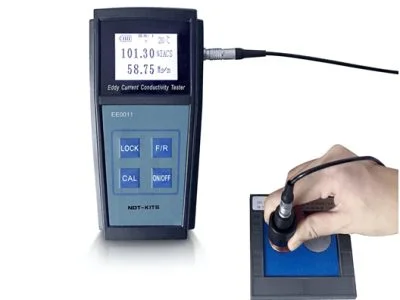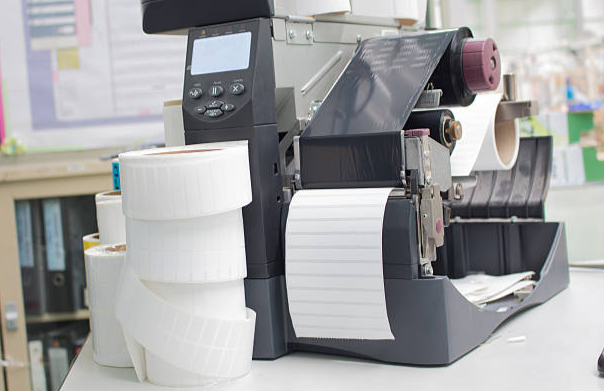When you’re testing metal materials, electrical conductivity reveals important information—purity, alloy composition, and heat treatment status. It’s essential for sorting aluminum grades, validating processing quality, and ensuring material consistency in production.
A reliable electric conductivity meter gives you that data quickly and without damage. But not all models offer the same capabilities. Accuracy, frequency range, probe design, and temperature control can all affect how well the device fits your job.
In this guide, you’ll learn what features to look for when choosing a meter, based on the demands of your materials, testing conditions, and inspection workflow.
Measurement Accuracy and Resolution Matter Most
If you’re inspecting metals with small differences in conductivity—such as heat-treated aluminum alloys—measurement accuracy directly affects your results. Even a 1% variation can indicate a change in temper or alloy content.
Look closely at the device’s resolution. A meter with 0.01% IACS resolution can detect finer variations than one with only 0.1%. This matters when you need to separate closely related material grades or verify subtle processing changes.
But higher resolution doesn’t always mean better performance. If your application only requires general sorting or alloy screening, standard accuracy may be enough. Choose a meter that matches your tolerance range—not just the highest number on the spec sheet.
Frequency Settings Affect Accuracy and Material Compatibility
Eddy current conductivity meters operate at fixed frequencies—commonly 60 kHz or 120 kHz. The choice of frequency affects how the signal interacts with the material.
Lower frequencies penetrate deeper and are less sensitive to surface roughness. Higher frequencies improve resolution near the surface but may be affected by coatings, oxide layers, or irregular textures.
A dual-frequency meter gives you more flexibility. You can switch between frequencies based on material thickness, surface condition, or required sensitivity. This helps improve measurement accuracy across a wider range of alloys and use cases.
If you work with different part types or process conditions, dual-frequency capability is a practical feature that saves time and improves repeatability.
Temperature Compensation for Reliable Readings
Metal conductivity is highly sensitive to temperature. Even a small change in ambient conditions can lead to noticeable shifts in readings. That’s why conductivity values are typically standardized to 20 °C.
Some meters apply this correction manually—you enter the temperature, and the device adjusts the value. Others use built-in sensors to measure the temperature of the material or the environment in real time, then apply automatic compensation during measurement.
If you’re performing inspections in workshops, outdoor sites, or variable environments, automatic compensation is a critical feature. It saves time, reduces human error, and improves the consistency of your results.
For accurate and repeatable data, choose a meter that includes a reliable temperature compensation system—ideally one with a contact or embedded sensor near the probe.
Probe Design Should Match Your Material and Surface Condition
The probe is the part of the meter that contacts the material—and it directly affects measurement accuracy. If you’re testing flat, polished samples in a controlled setting, a fixed high-precision probe works well. But for field work or curved surfaces, a portable probe with a spring-loaded tip is easier to handle and gives more stable readings.
Also consider the material surface. Rough, oxidized, or coated surfaces can interfere with probe contact. In some cases, light surface cleaning may be needed. A well-designed probe can reduce the impact of surface variations and help maintain consistency.
Choose a probe that fits the shape, conductivity range, and surface condition of the materials you inspect most. A mismatch between probe design and test material can lead to unstable or inaccurate results.
Interface and Data Features That Make Daily Use Easier
When you’re performing repeated tests—especially in production or quality control environments—a clear display and efficient data handling make a big difference.
Look for a meter that shows results in both %IACS and MS/m. This dual-unit display helps avoid conversion errors, especially if your team or customers use different standards. A backlit screen is also useful in dim workshops or outdoor settings.
More importantly, consider how the device handles data. If you’re testing batches of parts or logging trends over time, built-in storage and export functions are essential. USB or Bluetooth connectivity allows you to transfer readings quickly and archive them for traceability or reporting.
A good electric conductivity meter should not only measure accurately, it should also help you work faster, reduce manual entry, and keep your results organized.
Compliance with Industry Standards Ensures Reliability
If you’re working in aerospace, rail, or power generation, your conductivity meter must comply with recognized standards. Many customers and auditors require proof that your measurements follow validated procedures.
Standards like ASTM E1004 define how eddy current conductivity testing should be performed on non-ferrous metals. In aerospace applications, compliance with NADCAP NDT requirements is also common.
Using a meter that meets these standards not only improves credibility—it helps you pass third-party audits and ensures your inspection data holds up under regulatory review.
Portability and Durability for Real-World Conditions
If you’re taking measurements in the field, lab-grade specs aren’t enough—you need a device that can handle tough environments.
Look for a model that’s battery-powered with long runtime, so you’re not tethered to a power source. A durable casing with at least IP54 protection helps resist dust, moisture, and temperature swings. This is critical for workshops, hangars, or outdoor sites.
Also consider usability: Can the meter be operated with one hand? Can it hang on a belt or shoulder strap during ladder work? Field inspections demand equipment that’s not just accurate—but easy to carry, handle, and protect on the go.
Conclusion: Choose the Right Tool for Your Inspection Needs
There’s no universal “best” conductivity measurement device—only the one that fits your application. Whether you’re sorting aluminum alloys, verifying heat treatment, or working under variable conditions, the right choice depends on your material type, accuracy requirements, and working environment.
Take time to compare features like resolution, frequency, temperature compensation, and probe design. A well-matched device will improve your inspection efficiency and ensure reliable, repeatable results in real-world conditions.









